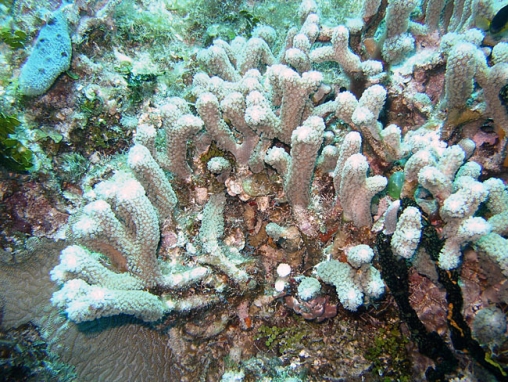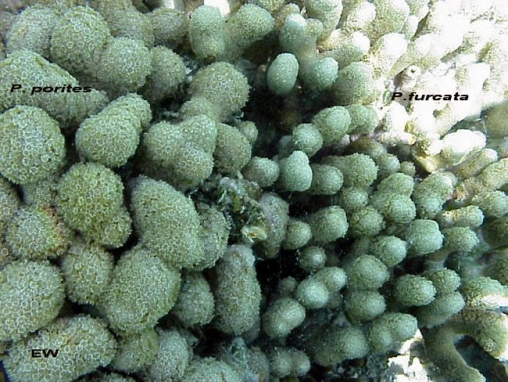Porites furcata
Colonies may be extensive, covering many square metres. Branches are thinner than P. porites but are commonly stubby, usually elongate and have rounded tips, and are not as slender or as branched as P. divaricata. They are usually grey.
Basal areas are usually dead. This species forms much of the coral rubble in some areas.
The three branching species are easily confused, and colony shapes overlap . As a general guide:
P. porites - thick branches (>2 cm) may be stubby and little developed with enlarged, blunt tips. Developed branches upright or sprawling, often grey, occasionally bright blue.
P. furcata - extensive colonies with dead basal parts, intermediate width (1-2 cm), elongate, tightly compact, branches all finger-like with rounded tip, often grey.
P. divaricata - branches are the most slender (<1 cm)and widely spaced of these species. They are often divided at their tips, likely to have live tissues at their bases, colours vary from purple, yellow-brown, grey, to brown.
Basal areas are usually dead. This species forms much of the coral rubble in some areas.
The three branching species are easily confused, and colony shapes overlap . As a general guide:
P. porites - thick branches (>2 cm) may be stubby and little developed with enlarged, blunt tips. Developed branches upright or sprawling, often grey, occasionally bright blue.
P. furcata - extensive colonies with dead basal parts, intermediate width (1-2 cm), elongate, tightly compact, branches all finger-like with rounded tip, often grey.
P. divaricata - branches are the most slender (<1 cm)and widely spaced of these species. They are often divided at their tips, likely to have live tissues at their bases, colours vary from purple, yellow-brown, grey, to brown.





